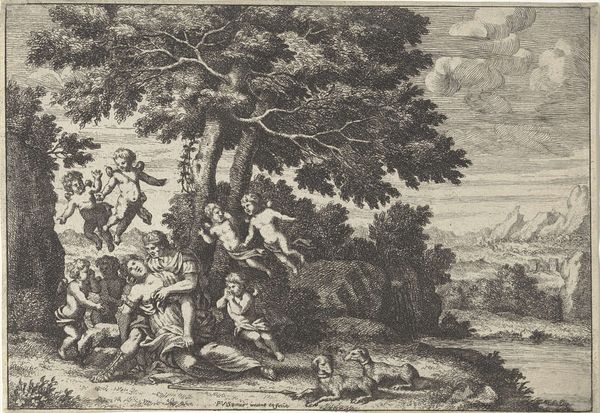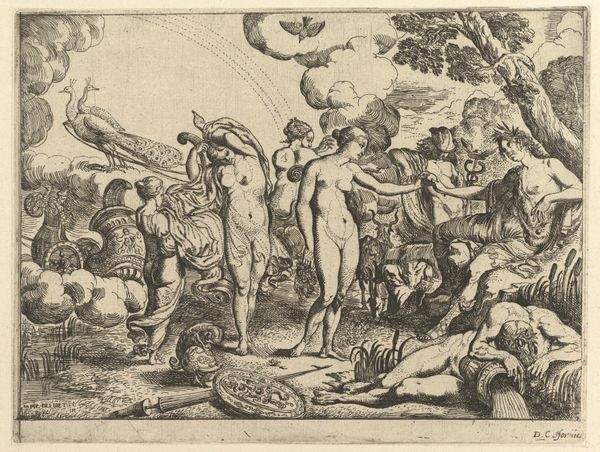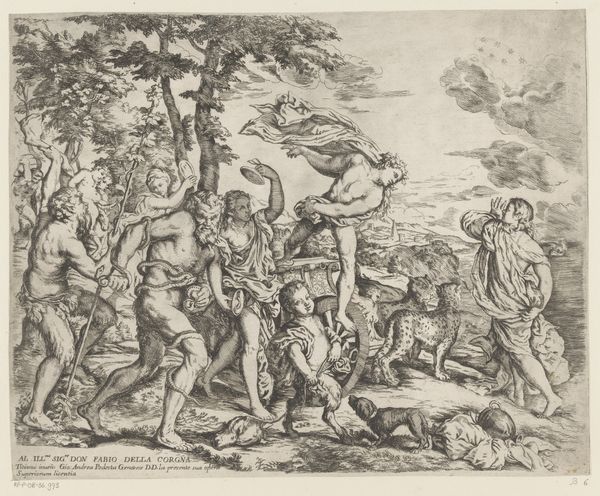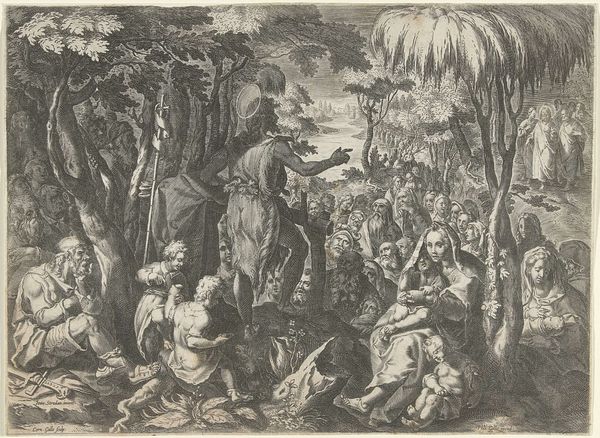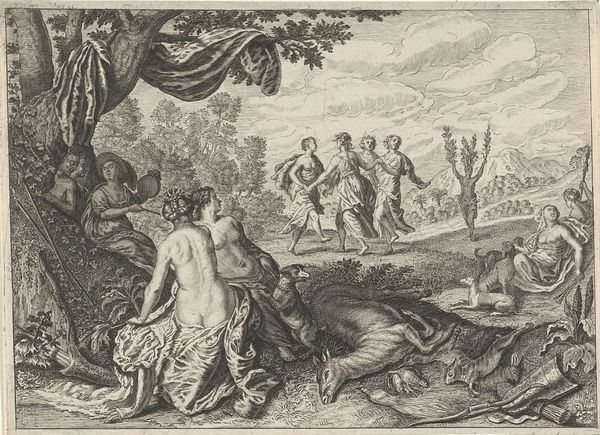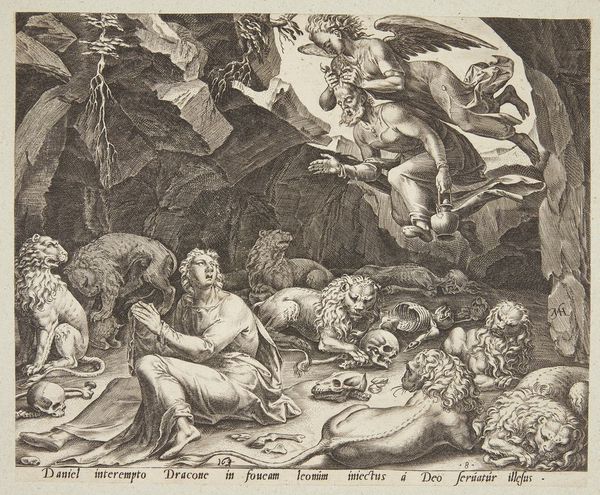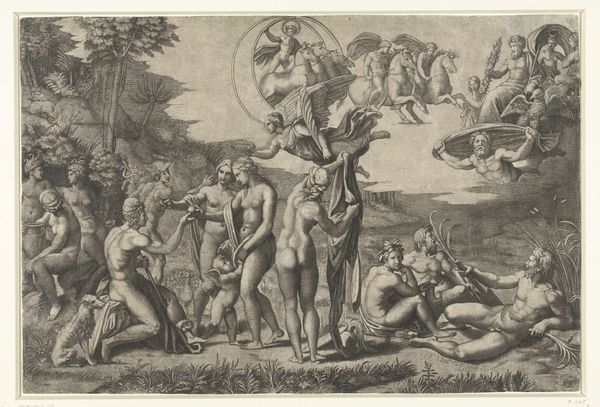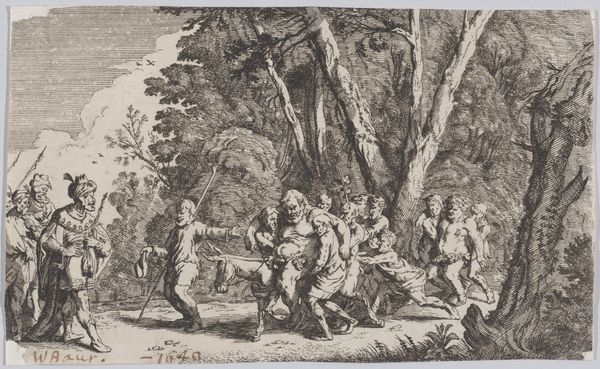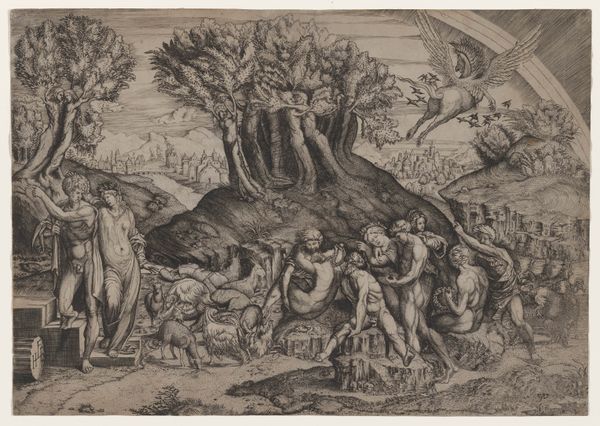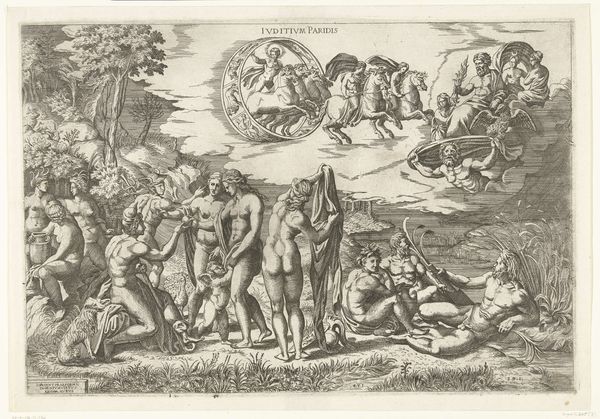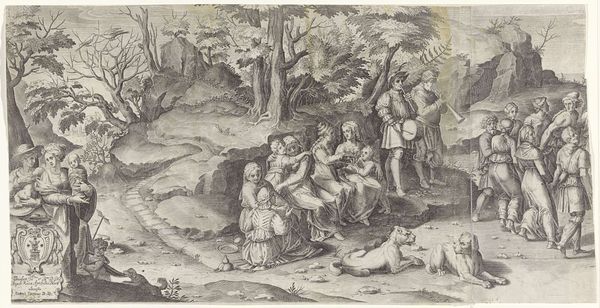
Johannes de Doper wordt begeleid door engeltjes als hij de woestijn intrekt 1595 - 1636
0:00
0:00
cornelisgallei
Rijksmuseum
drawing, print, ink, pen, engraving
#
drawing
#
ink drawing
#
allegory
#
baroque
# print
#
pen sketch
#
landscape
#
figuration
#
ink
#
pen
#
northern-renaissance
#
engraving
Dimensions: height 219 mm, width 278 mm
Copyright: Rijks Museum: Open Domain
Editor: Here we have Cornelis Galle I's engraving, "Johannes de Doper wordt begeleid door engeltjes als hij de woestijn intrekt," made sometime between 1595 and 1636. There's a sense of gentleness and guidance in this scene, almost pastoral. How do you interpret this work? Curator: What strikes me is the construction of innocence within a landscape of impending religious and political turmoil. Think about the Counter-Reformation context in which Galle was working. How might these cherubic figures and the saint's departure into the wilderness reflect the era's anxieties about religious authority and individual agency? Is this a purely spiritual journey or an act of dissent? Editor: Dissent? I hadn't considered that. I was focused on the sweetness of the cherubs protecting him. Curator: Right, but consider the wilderness. Historically, that space represents not just spiritual cleansing but also social exile, a rejection of established norms. And those "sweet" cherubs - are they truly innocent, or do they represent the pervasive power of religious doctrine guiding—or even forcing—John's path? Editor: So, it's less about faith and more about power structures? Curator: Not necessarily *more*, but definitely intertwined. How does Galle use the visual language of the Baroque – the drama, the emotion – to reinforce or perhaps even subtly question the church's authority during this period? The personal becomes deeply political in this work, right? What might seem like a straightforward religious scene is, in fact, a commentary on freedom. Editor: I see it now. What I thought was just a pretty, historical drawing speaks volumes about power, religion and societal pressures. Curator: Exactly, by engaging with art history through contemporary theoretical lenses, we begin to unravel the complex dialogues it creates with identity, power, and politics.
Comments
No comments
Be the first to comment and join the conversation on the ultimate creative platform.
